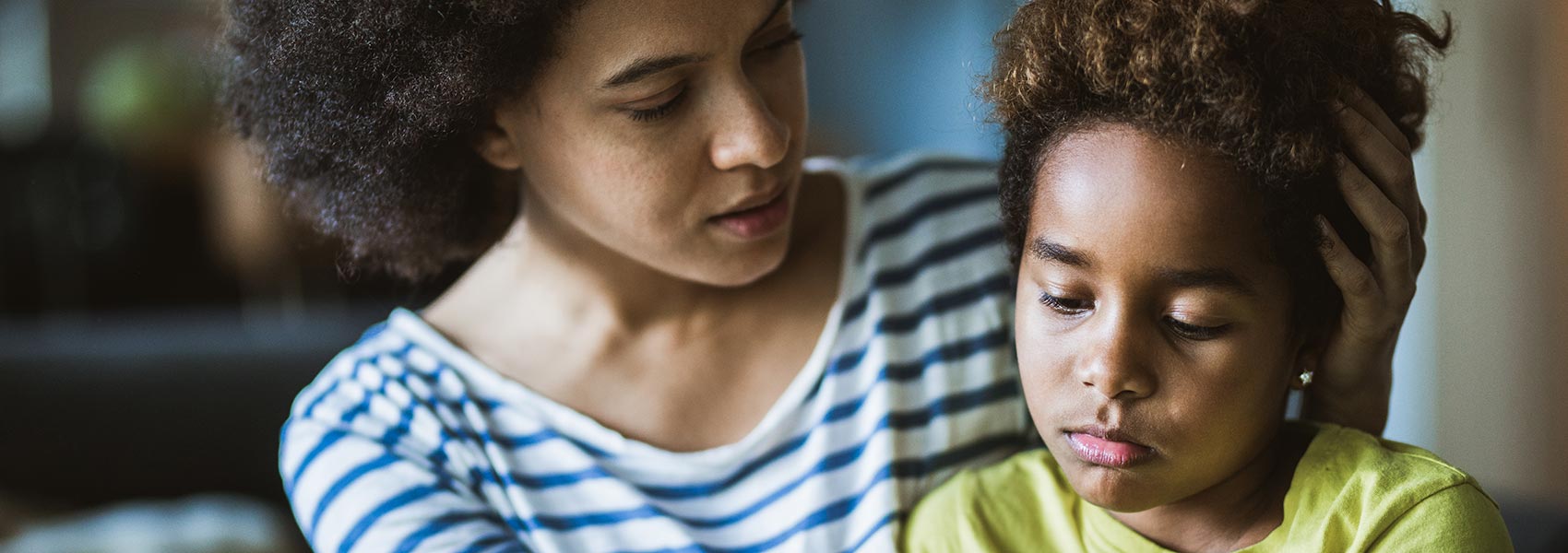After a child's meltdown
4 tips to make sense of what just happened
by Katie Hickok-Mannebach, LMSW, LCSW, and foster parent

Persistent childhood trauma—abuse, neglect, chronically feeling unsafe or out of control—physically changes how a child’s brain works. Neurons carry messages in our brains the same way cars travel on a highway. The way our brains interpret and respond to what’s happening around us builds up “highways” to information we access most. Children who are always in survival mode develop well-traveled pathways to their back brain, the amygdala, and fight or flight becomes their go-to response. When they are triggered and feel unsafe, their instinct is to survive.
Triggers are a call to the past, and when children are experiencing big emotions and feeling mad, sad, or out of control, their brain is unable to go beyond that moment. As a foster parent, you’ll want to make sense of what the child is experiencing, but that conversation needs to come later, in the calm after the storm.
This conversation might feel awkward to initiate, but it can build trust and connection between you and the child. And you can be better prepared if it happens again.
These tips will help guide your conversation after a meltdown:
Leave some space. It may take a few hours or a few days for the child to fully come back into their front brain and be able to talk about what happened without re-experiencing it. If they’re not ready, don’t force it. Conversations often begin when you’re not looking them in the eye. Try going for a drive or initiating conversation when you’re doing another activity. You might say, “Earlier today was kind of rough, and I’d like us to talk about it. Nobody’s in trouble, I just want you to be safe. Can you tell me what you were feeling?”
Talk about feelings. Most kids know the big ones like happy, sad, and mad. Younger kids may not understand the nuances of more complex feelings like frustrated or confused. Kids often don’t like admitting or talking about feelings that make them feel bad. Show them how to express themselves by talking about your emotions. “I feel angry when…” “I feel worried when...” and let the child know those feelings are OK. This not only gives kids a vocabulary for identifying and expressing what they’re feeling, but it also communicates to the child that you feel hard things too, and you have access to other ways of expressing your emotions.
Own it if you lose your cool. You’re human, and you’re bound to shout back, responding from a place of fear, anger, or frustration. When this happens, talk about it with the child. Say, “I’m sorry, I messed up,” and keep things moving forward. Show the child that neither the meltdown nor your response changed anything in the house. You still love them, and you’re still there for them.
Make safety your mantra. The child’s safety (physical and emotional) is your ultimate goal. But there’s a difference between being safe and feeling safe. You know they’re safe in your home, but they may not know that yet. Keep communicating—in the moment and afterward—that your goal is to keep them safe.
Trauma is not a life sentence. Kids can learn more effective ways to process and express emotions. Trauma-focused therapy, with time and patience, will help a child reconstruct their neural highways and build other roads to new ways of thinking and responding to triggers.
Read more about how to respond to a child in the middle of a meltdown. This article is reposted from a 2017 Bethany blog.



